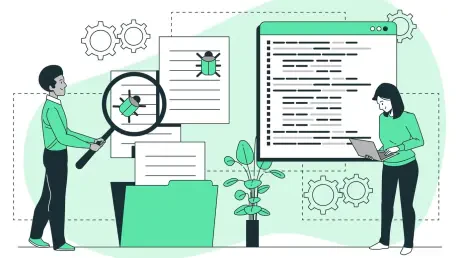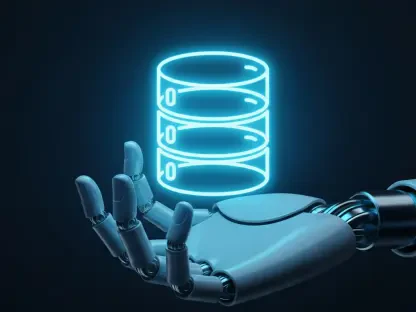Within the rapidly evolving domain of technology, the intersection of artificial intelligence (AI) and quality engineering stands as a significant development, particularly in software testing. As software complexity grows, the demand for more efficient testing methodologies reaches new heights, prompting both AI and manual testers to adapt and redefine their roles. The prevailing question is whether AI will eventually replace manual testers or act as a catalyst, enhancing their capabilities in the dynamic software development lifecycle. It is critical to explore how these changes are shaping the landscape of software testing, affecting both technological processes and human roles.
AI’s Role in Transforming Software Testing
The Rise of Intelligent Automation
Technology has always strived to make processes faster and more efficient, and AI testing tools are a testament to this trend. AI has introduced capabilities such as the generation of self-healing test scripts, dynamic test case creation, and intelligent test prioritization. These advancements allow software testing to be more insightful and adaptive, reducing the time and effort required for repetitive tasks like regression testing. Anomalies and potential areas of failure can be predicted, allowing for proactive measures, which are invaluable in maintaining high-quality standards. But while AI enhances the testing process, it requires significant data inputs, creating a dependency on comprehensive data analysis for optimal results.
Automation through AI has alleviated many manual testers from mundane, repetitive work, prompting a shift in focus towards higher-value activities. Manual testers are now encouraged to engage in tasks requiring human judgment, such as usability and exploratory testing. These activities, critical for understanding user behavior and spotting unique user-related issues, remain challenging for AI due to its limited capacity to mimic human intuition. The integration of AI has not diminished the importance of human testers but rather redirected their efforts towards more strategic, creative, and problem-solving roles. This transformation illustrates that AI serves as a tool to augment human capabilities rather than a full-fledged replacement.
Enhancing Testing Capabilities with AI
AI has a unique ability to consistently perform extensive testing in less time compared to traditional manual testing methods. By employing sophisticated algorithms, AI can generate detailed testing scripts, recognize patterns, and even simulate potential points of failure in the software. Through this intelligent method, processes that once took days can now be performed in mere hours, vastly improving the efficiency and effectiveness of software testing. Moreover, the adaptability of AI means that these tools can evolve as they gather more data, further enhancing their accuracy and reducing the odds of missing critical issues.
Despite AI’s many advantages, it is essential to acknowledge that its capabilities are not the only elements propelling the future of software testing. Human testers provide insights that AI currently cannot replicate, such as domain expertise, creative problem-solving skills, and a nuanced understanding of end-user experiences. These human aspects are indispensable to a holistic approach to software testing. The irreplaceable value human testers bring emphasizes the importance of collaboration between AI tools and manual testers, fostering a testing environment where both can complement each other’s strengths effectively.
The Future of Quality Engineering Roles
Evolving Responsibilities for Quality Engineers
The integration of AI into software testing is reshaping the responsibilities of quality engineers. As AI becomes more adept at handling the technical aspects of testing, manual testers are increasingly positioned to focus on areas where AI tools may fall short. Quality engineers are finding themselves tasked with designing and guiding AI-assisted tests, interpreting AI outputs, and pinpointing scenarios where AI might struggle to deliver accurate results. This evolution in responsibilities requires testers to adopt a strategic approach, overseeing the entire quality spectrum while maintaining a sharp focus on user-centric goals.
The shift brought on by AI demands that quality engineers embrace broader responsibilities, involving collaboration across various teams to integrate quality-oriented practices within development cycles. Engineers are now more than test executors; they are facilitators, employing AI tools to push the boundaries of testing methodologies. This strategic oversight ensures that the key aspects of quality engineering—validation, refinement, and prioritization—are aligned with both business objectives and user expectations. The evolving nature of AI and manual tester roles underlines the symbiotic relationship needed to deliver exceptional quality software solutions.
Strategic Insights and Continuous Learning
As roles evolve, quality engineers must adapt by enhancing their skills and knowledge to stay relevant in the changing landscape of software testing. Continuous learning is a requisite for success, with a focus on understanding emergent technologies and maintaining agility in adopting new tools. Quality engineers must also shift their attention towards understanding user needs and aligning testing strategies with business outcomes. Engaging in interdisciplinary collaboration further fosters innovation and ensures that quality-oriented practices are integrated seamlessly into the broader development process.
To fully leverage the opportunities that AI presents, a proactive stance on upskilling can not only keep quality engineers ahead of the curve but also establish them as indispensable contributors to the software development lifecycle. Understanding the synergies between AI tools and manual testing practices ensures that AI’s capabilities are maximized while preserving the human insights that remain essential for delivering well-rounded, user-centric testing outcomes. Addressing these challenges head-on and focusing on adaptability will enable quality engineers to navigate this transitional era effectively.
The Symbiotic Future of AI and Manual Testing
Harnessing AI’s Potential Without Losing Human Touch
The emergence of AI in software testing does not herald the end of manual testing but suggests a more collaborative future. AI tools provide automation, speed, and precision, making it possible to cover more ground in less time. AI-driven testing accelerates feedback loops, expands testing coverage, and maintains intelligent test scripts that assist in foreseeing potential problem areas. These technological advances present an opportunity for manual testers to harness AI’s potential to enhance their testing strategies without losing the essential human touch.
Striking a balance between AI’s precise capabilities and human insights is crucial in realizing the full potential of software testing. Manual testers continue to play a vital role in defining quality testing outcomes, contributing distinctive input that AI cannot mimic. Integrating AI tools into existing methodologies can be challenging, particularly when establishing confidence in AI-generated results. Nonetheless, manual testers who effectively familiarize themselves with new AI tools and integrate their outputs within traditional frameworks stand to benefit immensely from this collaboration.
Evolving Together for a Better Testing Landscape
As the technological landscape continues to evolve, so too must the methodologies and tools associated with quality engineering in software testing. The future of testing is likely to be characterized by greater collaboration between AI tools and manual testers, further blurring the lines between machine-driven precision and human intuition. By leveraging each other’s strengths, a more comprehensive and responsive testing methodology emerges. This approach will see AI tools utilized for what they do best—executing repetitive tasks and processing vast data sets—while manual testers concentrate on areas that require human intuition and judgment.
Ultimately, the partnership between AI and manual testers has proven to be a mutually beneficial relationship, one where each entity elevates the other’s capabilities. As the digital landscape expands and evolves, this strategic collaboration will determine how well the testing industry can adapt to new challenges. Future advancements in AI technology will only further enhance this partnership, emphasizing the importance of manual testers as pivotal contributors to quality assurance. Embracing this dual approach can dramatically advance testing practices and ensure the delivery of innovative, efficient, and user-centric software products.
The Path Forward in Quality Engineering
In the swiftly changing field of technology, the fusion of artificial intelligence (AI) and quality engineering marks a pivotal advancement, especially in software testing. As software systems become more intricate, the need for more effective testing strategies intensifies, compelling both AI technologies and human testers to adjust and redefine their roles within the industry. A pressing question emerges: will AI ultimately replace manual testers, or will it serve as a catalyst that amplifies their abilities within the ever-evolving software development lifecycle? It’s essential to delve into how these evolving circumstances are reshaping the software testing landscape, impacting not only technological methods but also the roles of humans involved in the process. As AI takes on more responsibilities, manual testers are urged to evolve, focusing more on strategic aspects rather than routine tasks. This evolution creates an environment where AI and human expertise can coexist, bringing forth a new era of collaborative testing methodologies.









